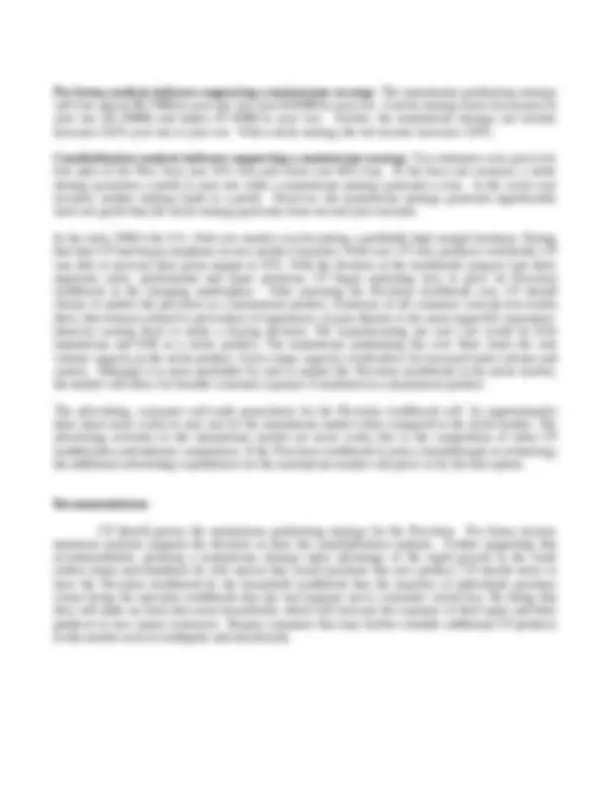



Study with the several resources on Docsity

Earn points by helping other students or get them with a premium plan


Prepare for your exams
Study with the several resources on Docsity

Earn points to download
Earn points by helping other students or get them with a premium plan
Community
Ask the community for help and clear up your study doubts
Discover the best universities in your country according to Docsity users
Free resources
Download our free guides on studying techniques, anxiety management strategies, and thesis advice from Docsity tutors
This covers the assignment answer for Colagate Palmolive Precision Tooth brush case study.
Typology: Study Guides, Projects, Research
1 / 3

This page cannot be seen from the preview
Don't miss anything!


Group Members
CCBMDO/19-20/A02 Abhimanyu Jhaver CCBMDO/19-20/A10 Ashis Keshri
CCBMDO/19-20/A14 E Saravana Vinod
CCBMDO/19-20/A17 Himrashmi Dwivedi
CCBMDO/19-20/A30 NRK Ravi Shankar
Statement of the Problem
In 1992, Colgate-Palmolive (CP) was contemplating with respect to launching and positioning of a
highly advanced toothbrush named as ‘Precision’. The Production Manager, Susan Steinberg, was weighing the option of launching ‘Precision’ to a niche market or to a mainstream market as both had Pros & Cons.
Causes of the Problem
In 1991, CP had controlled 16% of the toothbrush market. Toothbrushes had represented 19% of CP’s overall Oral Care Division sales and in that year, CP was the market leader (23% of all retail toothbrush sales). Prior to 1992, CP offered the Colgate Classic to the value segment and the Colgate Plus to the professional segment. Regarding market share & volume, there was decrease for Colgate Classic and marginal growth for Colgate Plus respectively. Consumers give equal importance to both tooth brush and tooth paste for oral care. The Precision toothbrush promised plaque removal by 35% compared with other brands through technological advancement in design. Prospective consumers ranked plaque removal is most critical attribute for decision making of purchase )
Consumer and Demand Analysis
In the early 1990’s in addition to Values and professional segments, a new segment, Super-premium toothbrushes designed for oral hygiene had emerged within the professional toothbrush market, The consumers are divided in to three groups based on views expressed by them regarding oral hygiene. First target group, “therapeutic brushers”, 46% of all adult tooth brush users do brush, floss and are keen on taking precaution for gum disease. Second target group, “cosmetic brushers”, 21% of adults tooth brush users do brush, floss and for interested in the cosmetic benefits. Third group, 33% of all adult tooth brush users view all toothbrushes as the same, therefore not being targeted by CP.
Strengths, Weaknesses, Opportunities and Threats (SWOT) of “Precision”
Strengths: Unique brush with three different lengths & orientations. Removes 35% more plaque than other super premium brushes. One weakness is CP might have to lose sales of its own other segment focused tooth brushes if ‘Precision’ is slotted for mainstream marketing approach. Second weakness is production capacity at CP. Opportunity is Precision toothbrush is very much meeting the requirements of therapeutic brushers. Therefore, retailers should be more receptive to adding a new line of premium toothbrushes to their shelves. Some of the threats to are other competitors such as Oral B, Johnson & Johnson, and Crest.
Competitor Analysis
Colgate-Palmolive had strong product offerings in both the value and premium tooth brush market segments, but needed to have a competitive offering for the super-premium market as its market was on faster growth path. CP’s major competitors, Oral-B and Johnson & Johnson had already launched super- premium brushes. Further, two new entrants were about to roll out tooth brushes super-premium market segment.